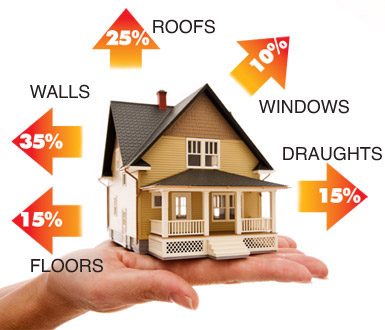Energy Efficiency
Make your home cosier and healthier whilst reducing energy bills and carbon emissions.
Where does my home lose heat?
Warm air can escape from your home in all directions – including the roof, walls, floor, windows and doors – meaning lots of the energy you pay for can go to waste. The first step is to understand where your home may be losing heat…this will help you decide on the measures which will have the most impact first.
Give or take, about 25% of the heat produced by your boiler will escape through the roof of your home. About 35% of the heat will escape through the walls and through gaps, in and around windows and doors, and about 10% of heat will disappear through the floor.
Taking action to make sure your home is energy efficient has many benefits. For your pocket, for your comfort and for the environment. Making your home more energy efficient can start with small, no or low-cost actions through to insulation, upgrading the building and retrofitting your home.
How Are NI Electricity Prices Actually Worked Out?
One of the most common questions we get asked is: “How are electricity prices actually worked out?” It’s a good question – and not always
Consumers Still Struggling with High Energy Bills, Despite Slowdown in Increases
We’re excited to share our annual Home Energy Survey (2025) with you, marking the fifth year in a row we’ve been able to give you
Home Energy Survey 2025: We Want To Hear From You!
Fancy winning £200 towards your energy bills? We want to hear from you! We’re running our Home Energy Survey for 2025 and want to know
Stay in the know...
Keep up to date with all the latest energy news, deals and advice from Power to Switch
